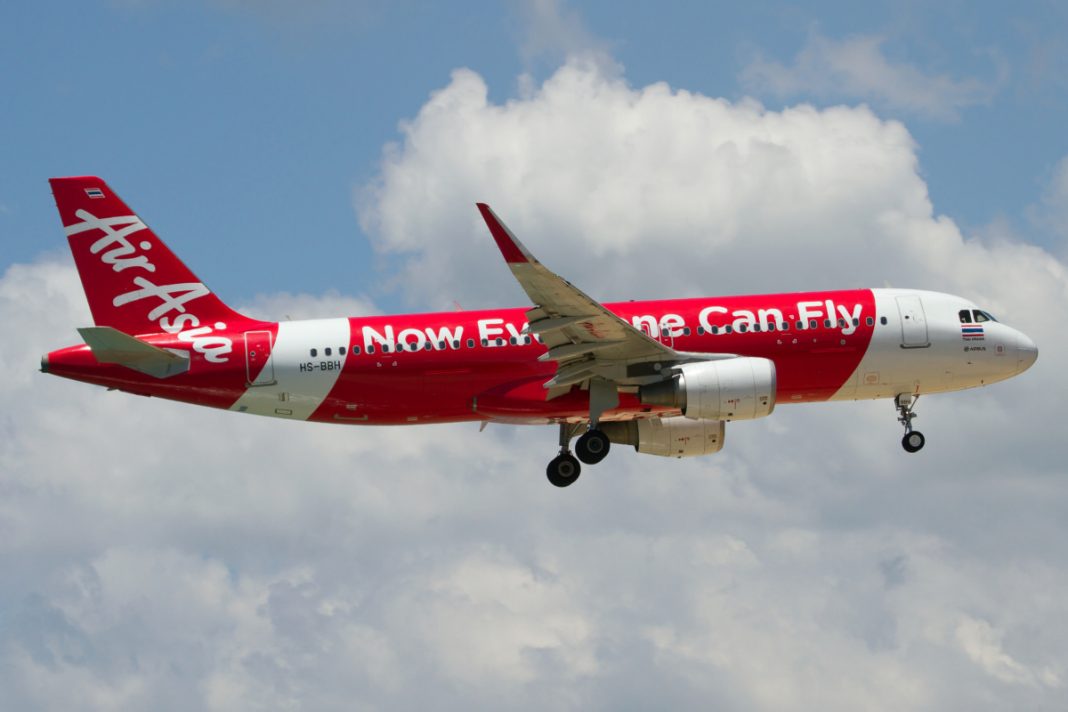AirAsia was hit early on in the global health crisis. Now, as the carrier looks at its options for a post-crisis recovery, there is a bright spot in the airline’s operations: AirAsia Thailand. The low-cost subsidiary expanded its operations and flew an impressive 96% of pre-crisis domestic capacity in September. However, by the end of the year, the plan is to grow that even more.

AirAsia Thailand has seen a strong rebound
Growing domestic demand in Thailand has pushed AirAsia Thailand to a strong position within the AirAsia Group’s operations. In September, the airline operated 96% of its pre-crisis domestic capacity. That was up from 59% in July.
In the entire third quarter, AirAsia Thailand carried over 1.8 million passengers with an impressive load factor of 65%. Only the Malaysian subsidiary reported a better load factor, marginally, however, of 66%. Just behind AirAsia Thailand’s load factor was the Indian subsidiary at 62%.

Nevertheless, the strong rebound increased AirAsia’s confidence, and the carrier opened a new operating hub at Suvarnabhumi Airport (BKK) in Bangkok. AirAsia Thailand remained the largest domestic carrier in the country. However, what is more exciting is that the airline plans to operate more than pre-crisis domestic capacity in the fourth quarter.
AirAsia’s Bangkok operations
Starting with Bangkok, AirAsia Thailand is known for its extensive operations out of Don Mueang International Airport (DMK). The airline’s secondary international airport, which is actually older in terms of years of service than Suvarnabhumi, caters mostly to low-cost carriers, including AirAsia, Nok Air, and Lion Air.

In September, however, AirAsia expanded its operations to Bangkok’s Suvarnabhumi Airport with operations across Thailand. Initial destinations included Chiang Mai, Phuket, Krabi, and Surat Thani. All of these operate with multiple daily flights.
AirAsia Thailand’s Chief Executive, Santisuk Klongchaiya, said the following back when AirAsia announced it was adding flights at Suvarnabhumi:
“Suvarnabhumi Airport is an excellent aviation hub with easy access to the city centre and high potential for international connecting flights in the future. This should pave the way for new travel groups and enable us to better utilise our planes. For guests, the airport provides yet another way to fly low fares with AirAsia.”
Why a Thailand expansion makes sense
Suvarnabhumi’s largest airline, Thai Airways, is in a bit of trouble. The airline is working to restructure itself amid a severe cash crisis and loads of debt. As such, AirAsia Thailand is now going after the domestic market in the hopes of getting as many passengers as possible and growing its market share while Thai Airways remains unable to massively resist AirAsia’s growth, or at least counter it.
Across the world, airlines are searching for new sources of revenue, and that often includes new routes. United Airlines is launching new long-haul flights. Southwest Airlines is targeting new opportunities at major US airports. In Europe, Lufthansa is adding new long-haul flights from March 2021.

Once more international routes can reopen, and more short-haul international routes become viable, it would not be surprising to see AirAsia add some flights to cities like Seoul, Tokyo, or Shanghai, among others, out of Suvarnabhumi using Airbus A330s flying for AirAsia X. However, first, it will need to target and ensure the success of a short-haul hub out of BKK.
What do you make of AirAsia’s plans for its Thai subsidiary? Do you think the carrier is making the right move by adding flights to Suvarnabhumi? Let us know in the comments!
[ad_2]
Source link


